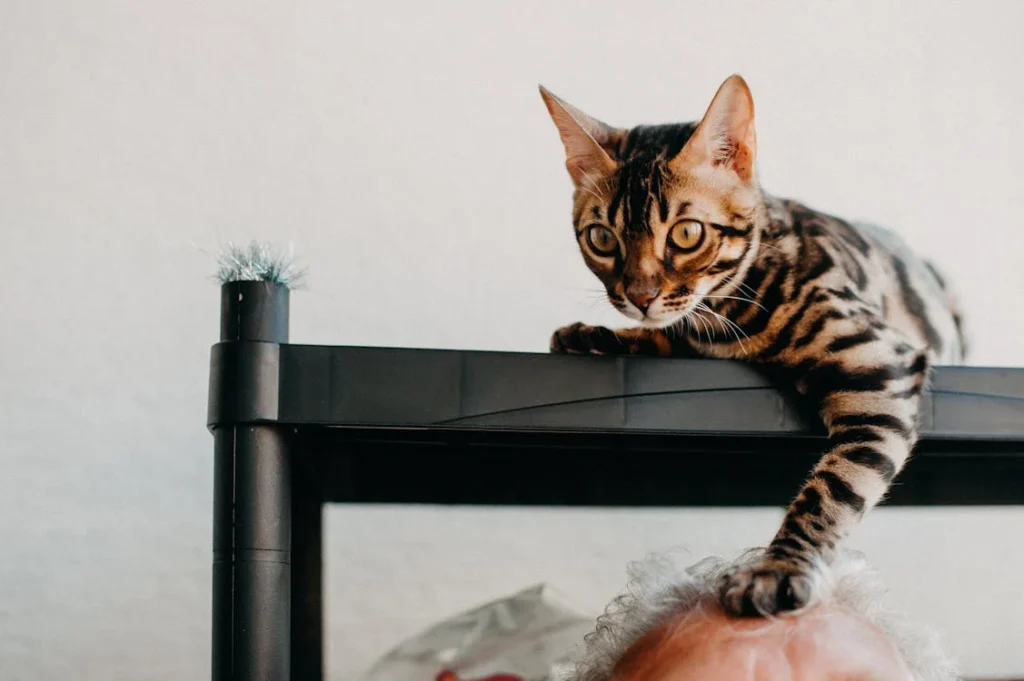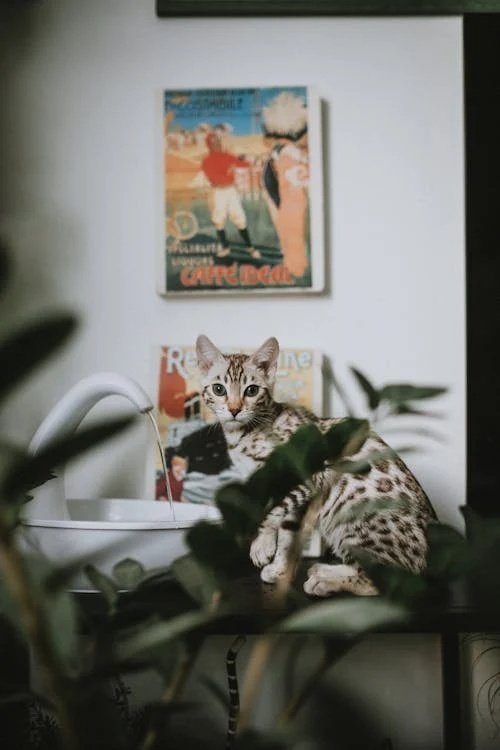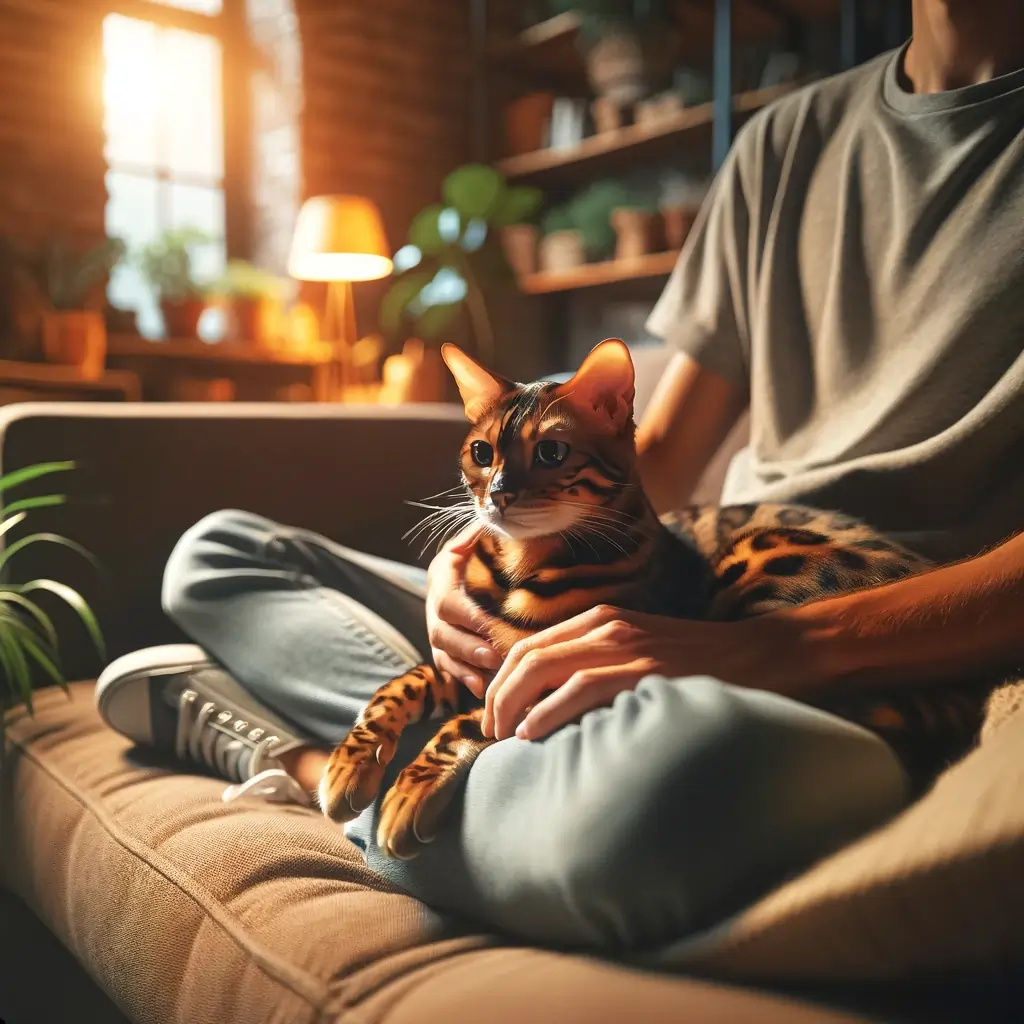Bengal cats are high-energy and playful, and they often need mental and physical stimulation. While some Bengals love being held, showing it by purring, nuzzling, and seeking out arms, others prefer their independence, avoiding being picked up and engaging in solitary activities. Building trust with our Bengal involves a consistent and positive environment, stable routines, and quality time together.
If we want to hold our Bengal, supporting their body and observing their reactions is key. Curious about how to better understand your Bengal’s preferences and behaviors? Stick around for more insights.
Understanding Bengal Cat Behavior
Understanding Bengal cat behavior is essential for fostering a healthy and happy relationship with these energetic felines. Bengals are known for their high energy levels and playful nature. We need to provide ample opportunities for mental and physical stimulation to keep them satisfied.
They love climbing, so having cat trees or shelves can make a big difference. Interactive toys and regular playtime can also help channel their energy positively. Bengals are social and often enjoy the company of their human families. They can be quite vocal, using a range of sounds to communicate their needs and feelings.
Signs Your Bengal Likes Being Held
One clear sign your Bengal likes being held is when they actively seek out your arms and purr contentedly while being cradled. If your Bengal cat relaxes and even kneads with their paws when held, it’s a positive indication they enjoy the closeness.
We can also observe their body language; a relaxed posture, soft eyes, and a tail that isn’t twitching are good signs. If they nuzzle or rub their head against us while being held, it’s a display of affection. Additionally, some Bengals may even follow us around the house, looking for opportunities to be picked up.
These behaviors show that our Bengal cat feels safe and content in our embrace, reinforcing their bond with us.

Signs Your Bengal Prefers Independence
While some Bengals relish in close contact, others clearly exhibit behaviors that signal they prefer their independence. We need to understand these signs to respect their boundaries and foster a healthy relationship.
Bengals that prefer independence often show:
- Avoidance of Being Picked Up: If our Bengal consistently squirms or tries to escape when we lift them, it’s a clear sign they don’t enjoy being held.
- Preference for Solitary Activities: Notice if they spend more time alone, engaging in play or exploring without seeking our company.
- Limited Physical Affection: If our Bengal rarely initiates contact like rubbing against us or sitting on our lap, they may prefer their own space.
Recognizing these signs helps us respect their need for independence.
Building Trust With Your Bengal
To build trust with our Bengal, we should create a consistent and positive environment that encourages their sense of security. This involves providing a stable routine, as Bengals thrive on predictability. Regular feeding times, play sessions, and grooming can help them feel secure.
We should also use positive reinforcement, like treats and affection, to reward good behavior. Avoid sudden movements or loud noises, as these can make Bengals anxious. Spending quality time with our Bengal, allowing them to come to us on their terms, helps them see us as a safe and reliable presence.
Patience is essential; trust doesn’t develop overnight. By respecting their boundaries and being consistently gentle, we can build a strong, trusting bond with our Bengal.
Tips for Holding Your Bengal Cat
Once we’ve built trust with our Bengal, we can start focusing on the best ways to hold them comfortably and safely. Here are some tips to make the experience pleasant for both of us:
- Support their body: Always use both hands—one under the chest and the other under the hindquarters. This guarantees they feel secure and reduces stress.
- Stay calm and gentle: Speak softly and move slowly. Quick or rough actions can scare them, making them associate negative feelings with being held.
- Observe their reactions: Pay attention to their body language. If they start to squirm or show signs of discomfort, it’s best to put them down and try again later.

Alternatives to Holding Your Bengal cat
Not all Bengals enjoy being held, so it’s important to explore other ways to bond and interact with them. Playing interactive games is a great alternative. Bengals love to chase laser pointers or feather toys, which taps into their natural hunting instincts.
We can also use puzzle feeders to engage their minds and keep them stimulated. Training sessions offer another excellent opportunity to bond. Teaching them tricks or simple commands using positive reinforcement can be both fun and rewarding for both of us.
Lastly, grooming is a wonderful way to spend quality time. Regular brushing not only keeps their coat healthy but also strengthens our bond through gentle, tactile interaction. These alternatives provide meaningful ways to connect without holding.
Creating a Comfortable Environment
Understanding that Bengals have unique needs, let’s focus on establishing a comfortable environment that helps them feel secure and happy. Bengals are active, intelligent cats that thrive in stimulating surroundings. To guarantee they feel at ease, we need to provide them with space where they can exhibit their natural behaviors.
Here are three key elements to take into account:
- Vertical Space: Install cat trees or shelves to allow them to climb and explore. Bengals love to be up high where they can survey their territory.
- Interactive Toys: Keep their minds engaged with puzzle feeders, laser pointers, and wand toys. This helps prevent boredom and promotes mental stimulation.
- Private Retreats: Create cozy hideaways where they can retreat and relax. A quiet corner with a soft bed can make a big difference.
Conclusion
Some Bengals love being held, while others prefer their independence. By paying attention to their signals and building trust, we can develop a strong bond with our feline friends. Let’s always endeavor to make them feel comfortable and safe, whether that means holding them close or finding alternative ways to show our affection.
After all, a happy Bengal makes for a happy home!

Hey guys, My name is Simon Smith. I’m from Canada and live near Victoria
I live with my sweet family and have 20+ Ragdolls of different types. I love them as my own children. My profession is as a hotel manager.
I love to keep Ragdolls and grow their breeder case. I have 7 years of experience.
I’m an expert in cat care. So, I’m here to provide you with new information about my cats daily. This is my personal blog website, so I request that you kindly visit our site daily.
If you’re a Ragdolls lover and you have any questions or confusion about cats, text me on the Contact Us page or Gmail.
Thank u
